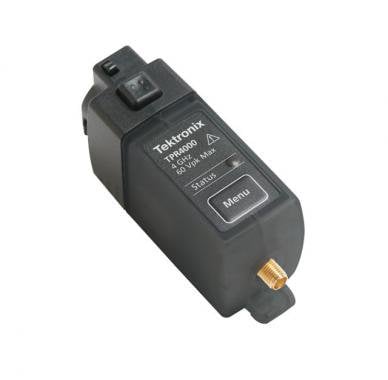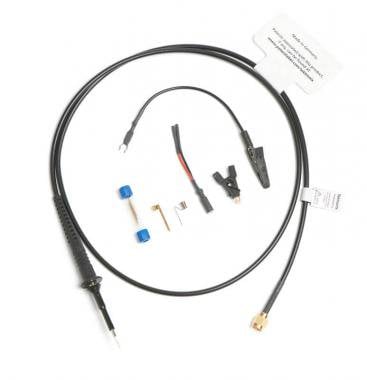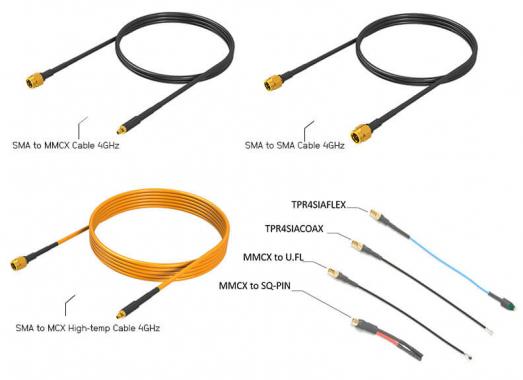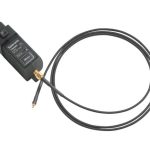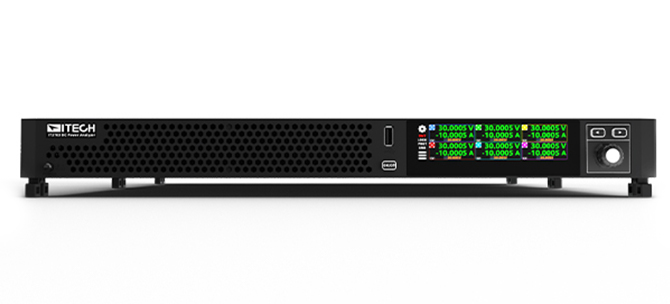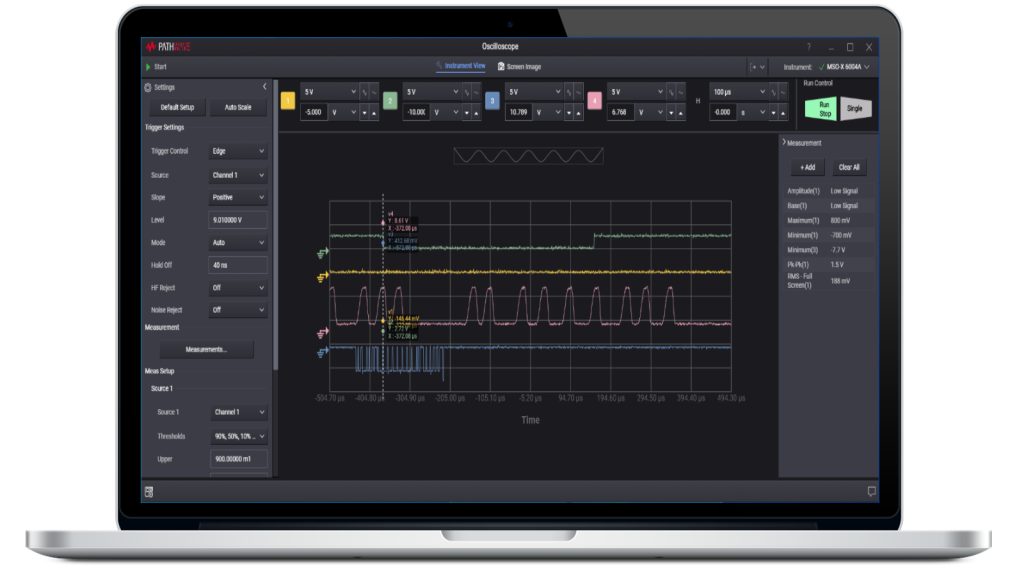
Why use a power ripple probe instead of a passive or differential probe?
Traditional power integrity applications typically use passive or differential probes to measure power rails. As the technology landscape continues to change, designers need higher accuracy ripple measurements and enable fast conversion to scale to multiple frequency ranges. New design challenges require the use of new measurement devices that minimize the noise of the measurement tool while also providing more bandwidth to see more of the signal. The ultra-low-noise TPR1000/4000 power-slide probes feature low-precision loads (especially in the most sensitive measurements) and offer low-noise components and high-bandwidth options.

Power ripple probes provide extremely high resolution for distribution networks compared to traditional passive probes.
More data, faster signals
The new power ripple probe covers power rail transients up to 4 GHz and offers a ±60V bias voltage range to measure power from plugs to IC pins. It also offers a wide dynamic range of ±1V, which allows you to see the top drop on a line at higher voltage rails, or to see when a load or transient event is drawing a lot of current. With this powerful combination and the right oscilloscope, you don't have to worry about whether the noise you're seeing is coming from the test equipment or whether you're seeing sources of interference in your system that you've never seen before.
Overcoming connectivity challenges
Power engineers are challenged to achieve higher energy efficiency from smaller, more compact designs. This is especially true for engineers in the automotive, industrial, and consumer markets, where typical verification requires probing at least 1 or more power rails as well as other signals. This creates new constraints on connectivity due to compact spacing, interference with signals, and small geometric component sizes.
The Power Ripple Probe comes with modular and flexible connection options to meet most needs. The MMCX latch connection can now be used when soldering on surface mount assemblies with power rails attached, making test setup a breeze.
Qualified, Preferred and Ideal Oscilloscopes for Power Slide Measurements
Regardless of the industry, power integrity requirements are becoming more stringent and the number of power rails in a single design is increasing. Depending on your bandwidth requirements, Tektronix has a complete line of oscilloscopes ideally suited for use with power ripple probes.
For engineers working to achieve power integrity in fast devices such as microprocessors, memory components, FPGAs, storage devices, and image sensors and needing the highest accuracy in ripple measurements in the 2 to 4 GHz range, use a 6-series MSO oscilloscope with a bandwidth of up to 8 GHz. If you don't need excessive bandwidth, but need accurate ripple measurements on an ever-increasing number of DC power supplies, you can use up to 8-channel 5-Series MSO oscilloscopes. For traditional ripple measurements on the bench up to 1GHz, the MDO3000 and MDO400C are the smart choices.

| model number | attenuation | bandwidths | dynamic range | DC Offset | quote |
|---|---|---|---|---|---|
| TPR1000 | 1.25x | 1 GHz | ±1 V | ±60 V | US $7,710 |
| TPR4000 | 1.25x | 4 GHz | ±1 V | ±60 V | US $11,800 |
 Comprehensive test and measurement service provider-Shenzhen Weike Electronic Technology Co.
Comprehensive test and measurement service provider-Shenzhen Weike Electronic Technology Co.

